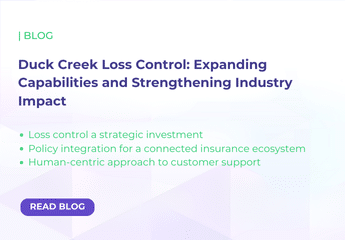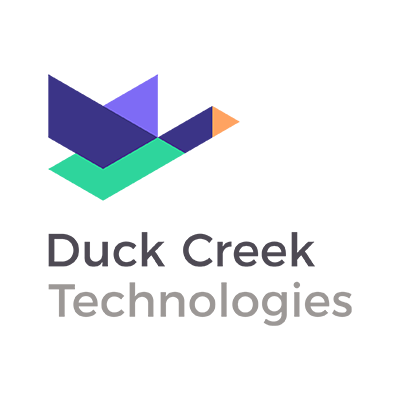The insurance industry today is in never-ending pursuit of speed — fast solutions, fast customer service, fast claims resolutions, and fast product development. While all of these advancements are rooted in technology, the primary driver of this need for speed is insurance automation.
Insurance automation technology has made traditionally slow insurance functions faster and more accurate. And while automation has been widely adopted across the industry, a new solution is also helping companies optimize efficiency — robotic process automation (RPA). Working together, RPA and insurance automation are transforming countless processes for insurers and customers alike.
What is Insurance Automation?
Insurance automation is essentially exactly what it sounds like — the automation of the major functions of insurance practices, such as policy underwriting, claims handling, customer self-service, and more.
Consumers today expect high levels of speed and personalized attention, which would be nearly impossible without automated functions. Many operations in the insurance industry can be made more efficient with insurance automation, including:
- Automating underwriting rules and driving referrals through more efficient workflow processes
- Automatically opening claims coverage and setting reserves based on pre-defined rule sets
- Implementing live chat functions and automatically answering customer questions and concerns in real time
- Automating billing and communications
What is RPA in Insurance?
As we mentioned, insurance automation is transforming the industry, but some companies are taking automation a step further by utilizing robotic process automation (RPA). According to Forbes, RPA allows companies to gain efficiencies and save money by automating routine, customer-facing tasks in a way that feels approachable to customers. Though RPA in insurance is considered artificial intelligence (AI), these new systems are designed to be remarkably easy to use.
Given the advancements that have been made in insurance automation technology, the capabilities of RPA insurance systems are seemingly endless. However, the most common work tasks that are automated via robotic process automation include:
- Work across different applications and systems.
- Moving content and data from spreadsheets to core systems, and vice versa.
- Migrating data from invoices into the core system.
- Transferring email data into core storage systems.
- Search and save valuable information from the web.
- Calculate data automatically to create reports.
So, how popular is RPA insurance automation? TechHQ estimates that by 2025, the amount of global spending on RPA is expected to top $3 billion.
RPA Insurance vs. Traditional Insurance Automation
RPA software and traditional insurance automation have many similarities and essentially the same goal – to optimize efficiency and accuracy across various insurance functions. However, these two technologies, while they work well together, have a few key differences.
- Technology: The technology required for traditional automation platforms is far more complicated and involved than RPA software systems. With traditional insurance automation, a developer is usually needed to implement systems and provide in-depth programming. With RPA insurance solutions, the robotic system is reading actions at the user level, making it a less complex technology to onboard.
- Speed: The complicated nature of traditional insurance automation vs. the uncomplicated makeup of RPA software plays a pivotal role in the speed with which insurers can roll out these programs. RPA software is simply faster than traditional automation, because it utilizes “plug-and-play” bots for many routine processes.
- Configuration: Because RPA insurance software is a much simpler and easy-to-deploy solution, it is also much easier to configure than traditional automation solutions. RPA is built on easy-to-program functionality that can be integrated with, and configured to work with, many different applications like customer relationship management (CRM) and enterprise resource planning (ERP) systems.
6 Benefits of RPA in Insurance: Why is RPA a Good Fit?
- Automation of tasks. “Claims processing, policy servicing, and underwriting involve repetitive tasks that could be automated for efficiency,” according to Insurance CIO Outlook. Pulling data is also a task that can be streamlined with automation.
- Employees are available for other duties. If insurance automation can take over particular tasks, employees who would normally handle those responsibilities are available to work on other projects.
- Increased savings. Automation is often less expensive than human labor, which means insurers can save time and money. One insurance company claimed it was able to free up 18,000 person-hours, which resulted in a $182,000 savings, according to TechHQ.
- Faster response and completion times. Since automation can streamline certain tasks (and often work faster than employees), response and completion times will shrink.
- More productivity. Faster response times, shrinking costs, and reallocation of employee workloads is often a recipe for increased business productivity. The automation of certain tasks allows insurers to reallocate employee responsibility, which in turn allows a business to become more efficient and productive.
- Improve accuracy. According to The Lab, “using RPA increases the reliability of data. That’s because, unlike humans, robots are unable to key in data incorrectly; nor will their ‘minds’ wander while performing repetitive tasks. But you must resolve bad data being received on the front end for it to work right.”
How Can RPA Affect Specific Processes?
Since many tasks, such as underwriting and processing claims, are often repetitive, these can be automated to enhance productivity, according to Insurance CIO Outlook. These tasks include manual ones such as data entry. RPA in insurance can also handle policy cancellation.
RPA in insurance can also be used in the world of regulation. “Achieving compliance with changing regulatory standards on a local and global level is a fluid, dynamic process,” according to Financier Worldwide. “Companies are seeking new ways to improve their compliance processes, optimize related costs, and ensure accurate reporting.”
According to Forbes, once RPA begins to provide advantages, the issue of how a business can scale while using RPA comes into play. “Scalability, though, is often cited as a limitation of RPA. Many RPA vendors address scalability concerns by focusing on how much hardware is needed to run their application or how easily it can be replicated a number of times.”
In addition, insurance automation can also work with existing systems.
RPA Insurance Trends to Watch
- Risk assessment and fraud detection. Automation can help better identify and evaluate risks that can impact an insurance carrier, according to Insurance CIO Outlook.
- Employing chatbots to enhance customer service. These popular automated tools are a great way to offer a 24/7 customer service experience. They are becoming so prevalent that 63% of people prefer a chatbot to a real person, according to Adobe.
- Transformation of routine tasks. Automation of everyday responsibilities such as claims processing is already increasing efficiency and productivity for many insurers.
- Increased use of artificial intelligence to analyze data. According to Adobe, “artificial intelligence has come into the mainstream because it allows us to make sense of an increasingly large amount of data in real time.” Insurers can use this information to analyze risk, change policies, and market to new potential consumers.
There are many benefits to insurance automation, including significant savings and a more productive and efficient work environment. Insurers are using automation to streamline regular, everyday processes to save time and money and provide more comprehensive customer service experiences.




